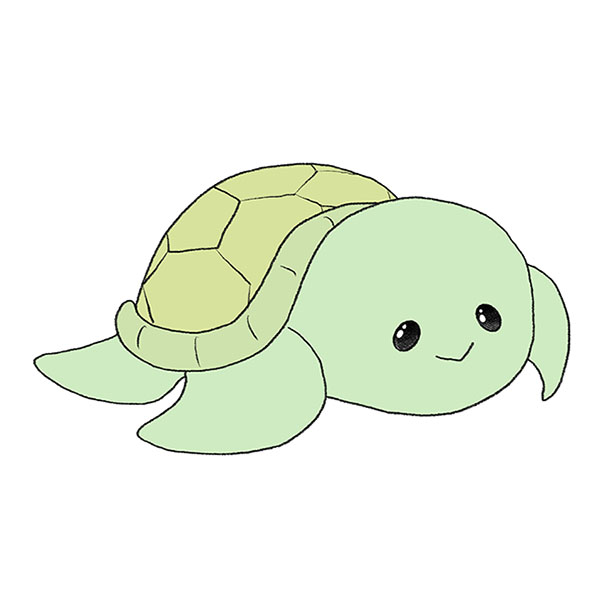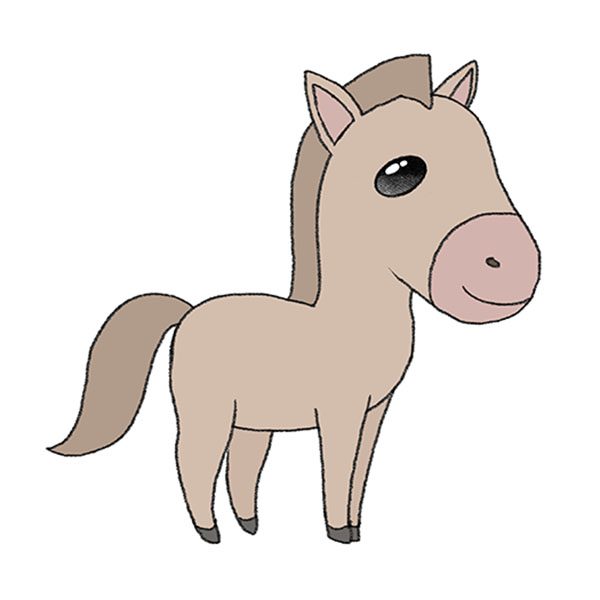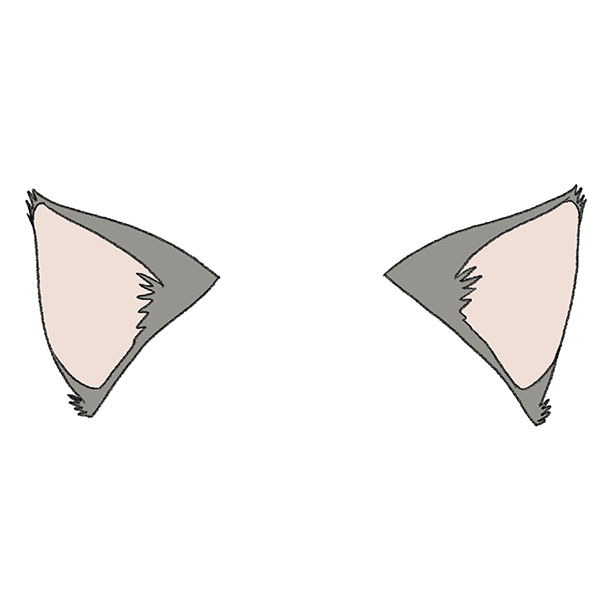How to Draw a Snail
Embarking on this artistic journey, I’m excited to show you how to draw a snail with a method that marries simplicity with elegance. My lesson unfolds the snail’s spiral and curved form into manageable steps, infusing your drawing with life and a sense of tranquility that these creatures exude.
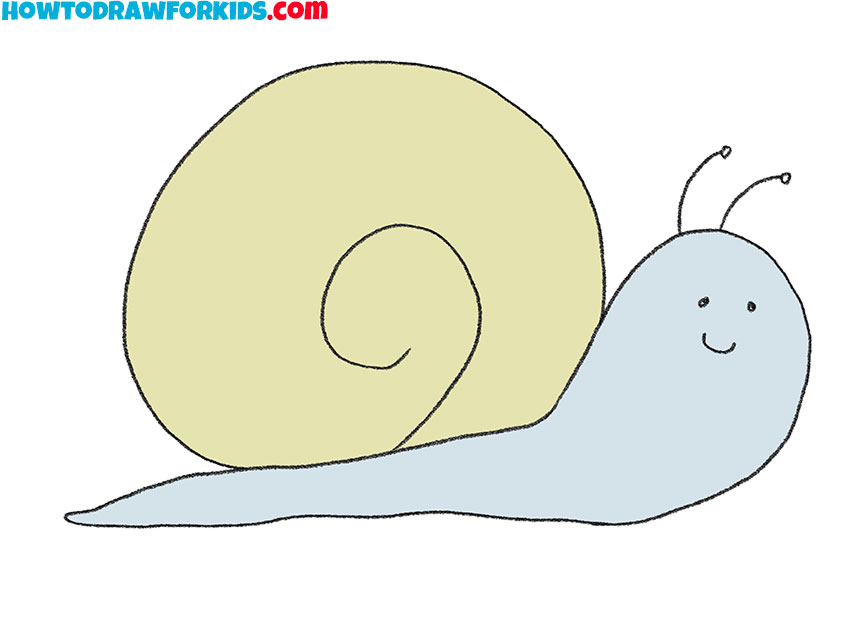
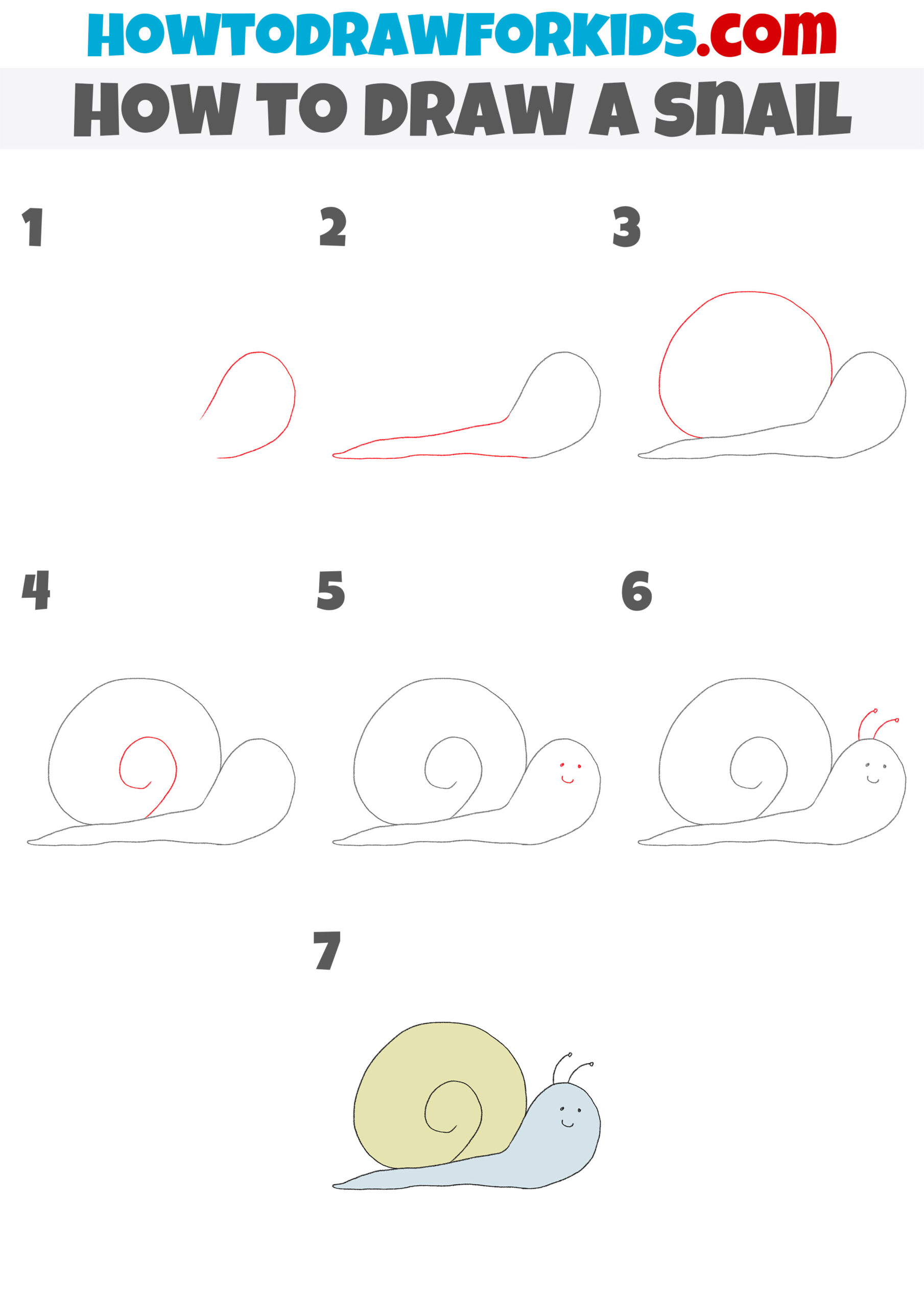
How to Draw a Snail: Basic Information
In the realm of art, where time meanders like the gentle pace of a snail, I present a technique on how to draw a snail that’s as soothing as it is simple. This lesson is my invitation to you, to delicately coax the snail’s form from paper, embracing its quiet existence with each gentle line and curve.
With pencil in hand, you’ll trace the snail’s shell, spiraling slowly outward, while its soft body stretches along the imagined garden path of your canvas. My method ensures that with each line, the snail’s peaceful essence is preserved, turning the act of drawing into an almost meditative experience that reflects the snail’s tranquil journey through life.
As our lesson draws to a close and you complete your snail, you’ll find in your creation a reflection of patience and an appreciation for the slower cadences of life. It’s here, in this artistic endeavor, that the humble snail teaches us the virtue of taking our time, inviting us to savor the process as much as the result.
Snail Drawing Tutorial
Materials
- Pencil
- Paper
- Eraser
- Coloring supplies
Time needed: 30 minutes
How to Draw a Snail
- Draw the outline of the snail’s head.
To complete this step, you need to draw one rounded line, as shown in the picture.

- Add the lower body of the snail.
Continue the drawn line with another line, depicting the pointed torso.
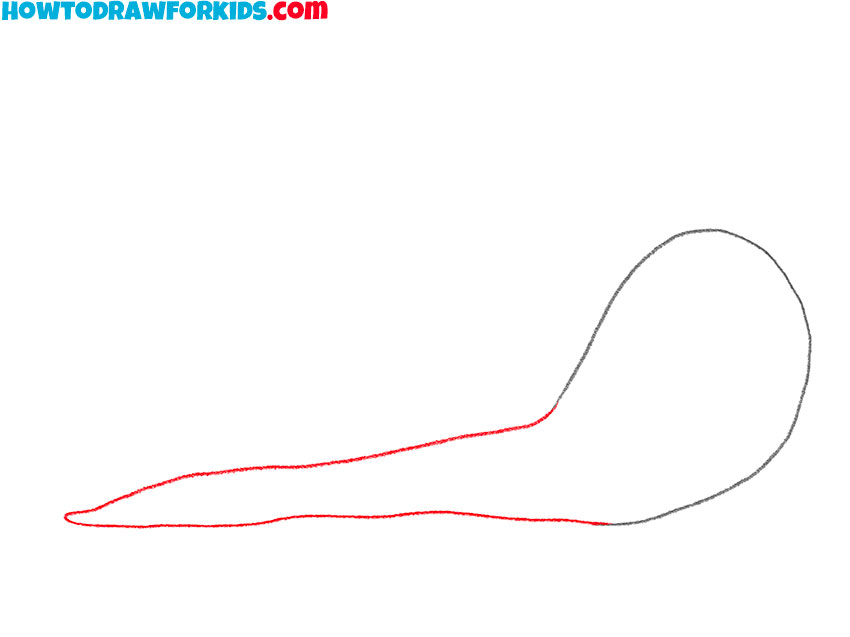
- Depict the shell of the snail.
Above the previously drawn elements, draw an incomplete circle using a curved line.
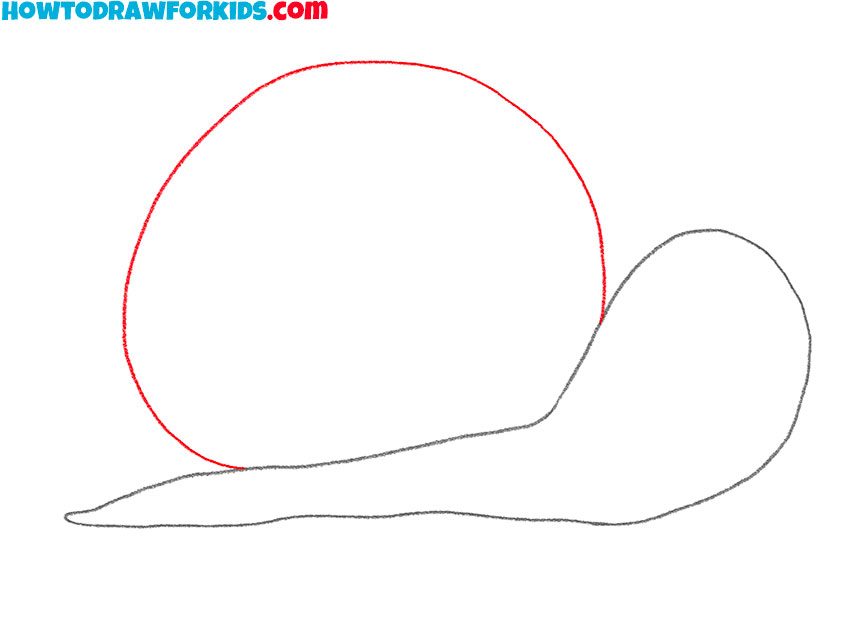
- Sketch out the inside of the snail’s shell.
Now you should draw one curl inside the shell using a curved line.
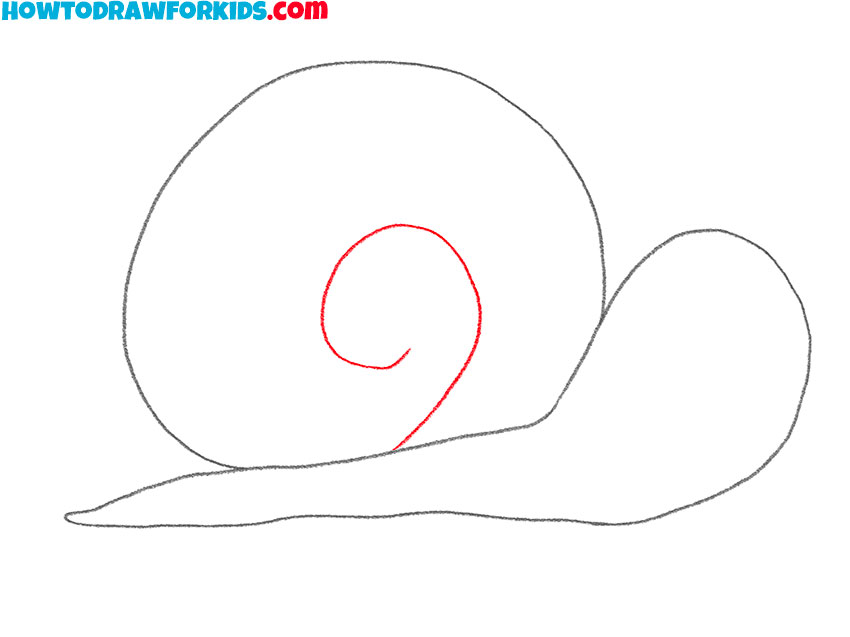
- Add facial features.
Inside the outline of the snail’s head, depict two points and add an arc below them.
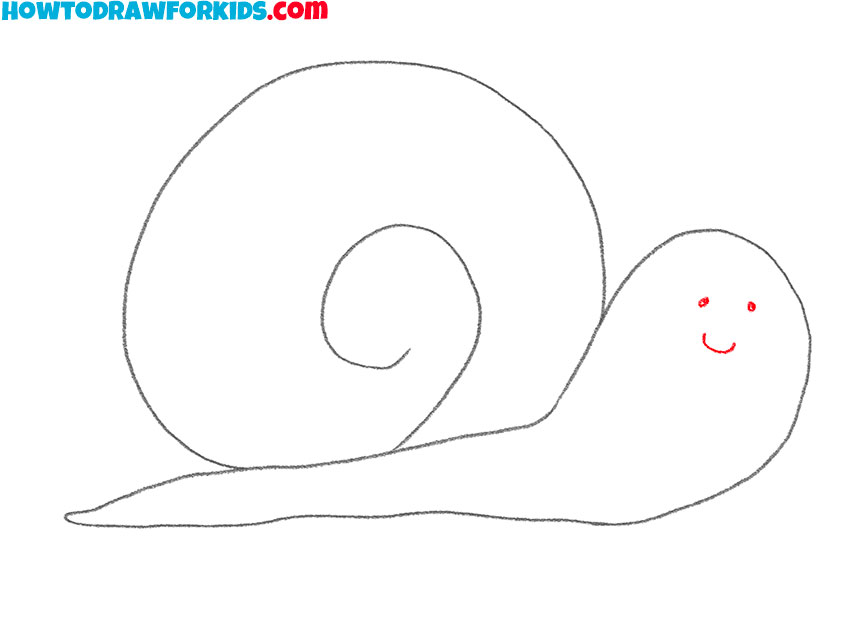
- Draw the horns of the snail.
At the top of the snail’s head, draw two identical elements using arcs and small circles.
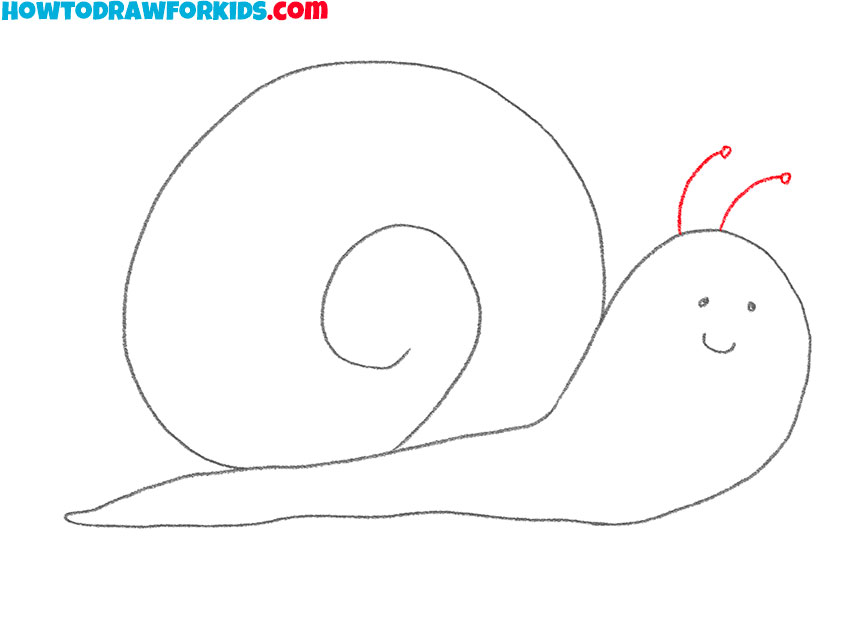
- Color the drawing.
To color the snail, use green and blue colors.

Additional Content
Alongside the gentle curves of our snail drawing lesson, a free PDF file stands ready, a minimalist version for ease of use anywhere, free from the tether of the Internet. It encapsulates the essence of the tutorial, serving as a quiet companion for those moments of inspiration that call for a pencil and paper.
This PDF is a treasure chest without the map; no steps or direct guidance, but rich with materials to further refine your drawing abilities. It’s the silent afterword to our lesson, the pages filled with potential for growth, ready to be explored once you’ve grasped the gentle art of drawing a snail.
Envision this PDF as a lantern in the dusk of our lesson, casting light onto paths yet untraveled in your artistic journey. After mastering the snail’s basic form, the resources within invite you to deepen your technique, turning simple lines into intricate works of art, continuing your growth beyond our shared beginning.
Additional Snail Drawing Techniques
To elevate your creative journey, I’ve crafted several alternative techniques for drawing a snail, each tailored to foster a different facet of your artistic growth. These varying approaches will not only add versatility to your skillset but also deepen your understanding of form and shadow, bringing to life the snail’s unique charm.
Whether it’s through the bold contrast of light and dark or the intricate detailing of the snail’s shell, these methods are designed to challenge and engage. Practice becomes play as you explore how subtle changes in technique can breathe different energies into your rendition of the snail, enhancing both your capability and your creative vision.
As you weave through these alternative paths, your ability to capture the essence of the snail will flourish. This diversity in technique ensures that with each snail you draw, you hone your skills, pushing the boundaries of what you can achieve with pencil and paper, and bringing the humble snail to life in ever-more imaginative ways.
How to Draw a Cartoon Snail
Starting with two simple circles, this alternative method for drawing a cartoon snail introduces us to the basics of character design. With a few added strokes for the pupils and curled lines for the antennae, the snail’s face comes alive, filled with personality and a hint of playfulness.
Next, the snail’s body takes shape through a single, fluid line that curves to create a plump base, suggesting the snail’s slow but sure movement. This line extends to form the tail, and a simple swirl starts the snail’s shell, each step building on the last to craft a character that’s both charming and whimsical.
The final touch is fleshing out the shell with larger, sweeping circles, adding depth and homey detail to our friendly mollusk. As the drawing completes, our cartoon snail seems ready to glide off the page, an embodiment of the cheerful slowness that defines its kind.

Snail Drawing Guide for Kindergarten
In this kindergarten-friendly method, we start by drawing a large circle, which will become the snail’s shell. It’s a simple beginning that promises success, encouraging young artists with the realization that complex objects start with basic shapes. The circle is a canvas for creativity, ready to be transformed.
From there, we add a smaller, elongated curve beneath the circle, sketching the snail’s body and head. This single line connects to the base of the shell, curving gently to form a soft trail behind. It’s a motion that’s both easy and satisfying for small hands to replicate.
The final touches are added by spiraling a line inside the shell and dotting the face with eyes and antennae. These details infuse the drawing with character and bring the simple snail to life. In just four steps, the snail is complete, ready to slither off the page and into the garden of the child’s imagination.
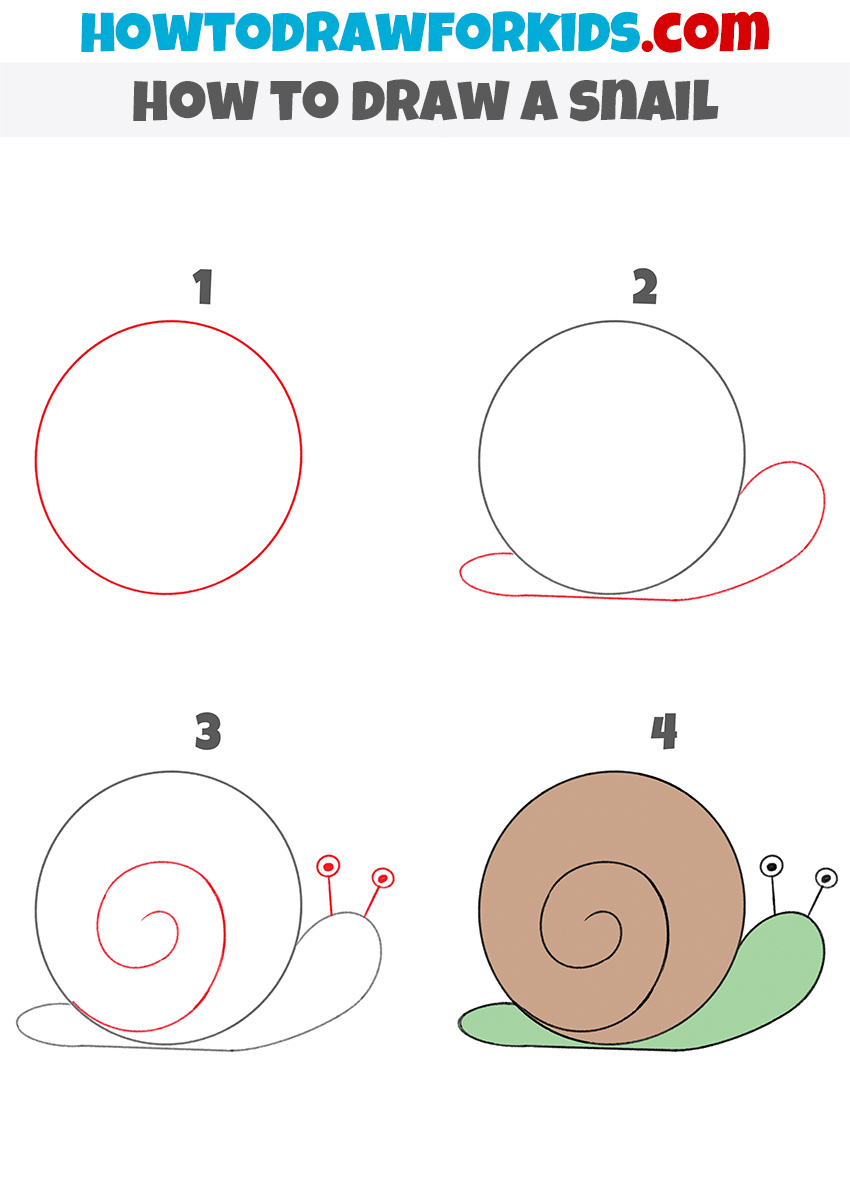
Cultivating Your Snail Drawing Techniques
In the quiet afterglow of our lesson, where the simple joy of drawing a snail was shared, the path to improvement beckons. The following points serve as guideposts on your journey to enhance the art you’ve created, a journey of continuous discovery and refinement.
- Practice the initial circle for the shell, aiming for even, smooth strokes to build a strong foundation.
- Experiment with different pressures of the pencil to give the snail’s body texture and depth.
- When drawing the spiral, maintain a consistent distance between lines to cultivate precision and control.
- Add variety by altering the size of the eyes and antennae to express different emotions.
- Practice shading beneath the snail to create the illusion of weight and grounding.
- Introduce background elements, such as leaves or grass, to place your snail in an environment.
- Use a light source to add dimension to the shell through shadows and highlights.
- Explore color blending techniques if using colored pencils to bring vibrancy to the snail.
As we set our pencils down, let these suggestions be the seeds from which your skill grows, watered by practice and nurtured by patience. Each point is a stepping stone to greater mastery, and with each attempt, your lines will flow with more confidence, your snail will come to life with more personality, and your art will become a more vivid mirror of the world you see.
Conclusion
The journey of capturing the essence of a snail on paper is merely the beginning. On my website, a kaleidoscope of lessons awaits – whether you wish to branch out into the avian grace of bird drawing or the intricate detailing of eyes. These tutorials are crafted to spark curiosity and expand your artistic horizons.
I warmly invite you to join our community by following my social media profiles, where the latest creations and upcoming lessons are just a click away. If your mind buzzes with ideas for new tutorials, or if you seek to share your progress, the comment section under each lesson is your canvas.

